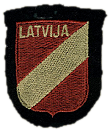A10 305 336
Service appealed. At oral argument on September 4, 1980 the Service submitted a motion to reopen the deportation proceedings in order to introduce new evidence of deportability. The Service appeal will be dismissed and the motion to reopen denied.
The alleged events that led to the Issuance of the Order to Show Cause (Form I-221) took place during World War II in Latvia. Latvia is one of three small nations now within the Soviet Union bordering on the Baltic Sea and approximately 300 miles from Leningrad, Russia. It Is located between Lithuania and Estonia. Its capital Is Riga, which is a Baltic merchant city that originated from the Germanic-Hanseatic league in the sixteenth century. All three small nations were founded after World War I when western portions of the Russian empire became independent nations. Latvia had been a part of the Russian empire since Peter the Great defeated the Swedish empire in the early eighteenth century. During World War I it was occupied by the Axis Forces when Russia withdrew from World War I in March 1918. The three nations did not fall within Bolshevik control following the November 1918 Russian revolution. Latvia came again within Russian control as a result of the Nazi-Soviet treaty of August 1939 dividing Poland. In June 1941 Germany invaded Russia and quickly drove to Leningrad where the war front stabilized until the German Army was defeated and the Russians counterattacked. The three nations have been annexed by the Soviet Union since then. However, the United States has never recognized the legitimacy of the Soviet annexation. 1/ The events charged in the Order to Show Cause allegedly took place between June 1941 and 1943 during the last German occupation of the area.
THE ALLEGATIONS OF DEPORTABILITY
The Order to Show Cause (Ex. 1) charged that the respondent was a native and citizen of Latvia who entered the United States at New York on August 23, 1956. It alleged that he had been admitted for permanent residence as an escapee pursuant to section 4 (a)(2) of the Refugee Relief Act of 1953, upon presentation of an immigrant visa issued on June 5, 1956 at Hamburg, Germany.
| 1/ | See generally: Alan Clark, Barbarossa - The Russian-German Conflict, 1941-1945 (1965); Times Atlas of World History, 144 (2d ed. 1979); Country Reports on Human Rights Practices for 1979, 689, U.S. Department of State (1980). |
2
